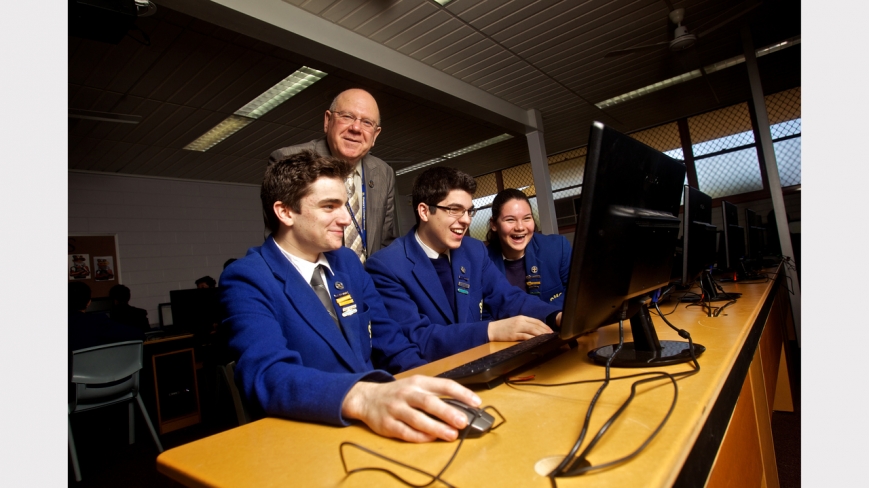A whirlwind study tour that took Dr Fulvio Frijo, deputy principal at St Monica’s College Epping, on seven flights in eight days in late June has refreshed his view on digital literacy for students.
Frijo’s mission as he travelled from communications company Cisco’s headquarters in San Jose to the International Society for Technology in Education (ISTE) conference in San Antonio was: To learn about digital literacy from Silicon Valley’s best and brightest.
READ: Fast internet a ‘must’ at schools
“The big message at the ISTE conference was why we say to our kids: ‘The moment you set foot inside the front gate, what you do outside of school is irrelevant’, he says.
“In the past we have said social media is out, YouTube is out – but the experts say we need to embrace technologies and trust our kids.”
Frijo says engaging students with technology in and beyond the classroom is an important step in developing their “digital citizenship”.
“If you want them to be responsible, teach them,” he says.
Frijo relates an example of trust that was presented at the ISTE conference. A school of 3500 students gave its kids an 18-month trial with personal Twitter accounts to promote use of the information source. In that time, there were only four reported instances of misuse.
“What that is saying is if you trust kids, you give them valid explanations, and they’ll come to the party,” Frijo says.
The Greensborough native has been teaching for 34 years, the past 19 as St Monica’s deputy principal.
With this wealth of experience, Frijo says the next frontier of digital education will be making use of available devices, improving technological infrastructure and online access.
Since the June 30 end to the federal government’s laptop program, which from 2009 gave every student from years 9 to 12 a laptop or tablet device, Frijo believes educators need to start rethinking the digital revolution.
“Schools now face the challenge of ‘how do we replace [the devices]?’” he says.
One option is using the devices students already carry with them.
“Kids are using mobile phones in classrooms,” he says. “We have an extra four words in our mobile phone policy: students are not to use mobile phones in classrooms, except for educational purposes.”
Like most schools, St Monica’s is considering a Bring Your Own Device program for 2014.
He says students would not have to continue to use ageing devices from the federal government program, and the school could focus on improving internet access.
“If we’re saying to students, you need to work off the web, then we need to be able to provide robust infrastructure,” Frijo says.
St Monica’s 1843 students have access to 25 megabytes per second, which will be increased to 100 by the end of the year.
With each development, Frijo is ensuring his students step into the future with confidence in their digital citizenship.
“Ultimately, we are focused on student outcomes,” he says.







